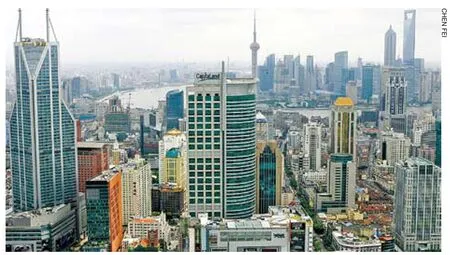Losses and Gains
2010-03-15KATEWESTGARTH
By KATE WESTGARTH
Living as an expatriate in China, one becomes a connoisseur of cultural differences. My Chinese friends are anxious to educate me in the subtleties of “face,” in China’s “years of humiliation,” and in the fact∶ “You foreigners just don’t understand.” And however many times I try to illustrate huge cultural differences between, say, Americans, British and the French,these are irrelevant next to the huge perceived gap between anyone else and the Chinese.
One of the most intriguing differences is to the attitude to the past and cultural heritage. Over lunch in Shanghai the other day, my friend Xiaomei was complaining about foreign visitors she had run into in Xintiandi shopping district. All they wanted,she felt, was to fi nd old, backward places to photograph. They had showed no interest in Shanghai’s development and couldn’t care less about Pudong or the Expo site. They wanted (she raged) to show China as poor and backward and to keep it subservient. They were only interested in picturesque poverty.
Now, I’d spent the morning wandering Shanghai’s streets, seeking its collection of art deco buildings. Cultural tourism has, of course,a long history in the West, from the medieval nun Egeria (who wrote a pilgrim’s guide to the Holy Land) to the 18th-century youths sent off on the Grand Tour in an earlier age’s equivalent of the gap year. I suppose, given the Western view of time as linear, it’s a way of keeping a connection with the people and civilizations who have gone before, of placing them in an historical period and of mentally putting ourselves in their shoes. It is a way of contextualizing ourselves, of learning from the past and of focusing on our future and how generations to come will view us.
It explains why many in the West are saddened when the modernization of a city equals the demolition of its past. It’s not a case of taking voyeuristic pleasure in photogenic penury∶the vast majority of us are far too addicted to our modern plumbing and comfortable lifestyle to wish the opposite on anyone else.Many of us have seen negative results of wholesale demolition and resettlement. When the slums in my home city of London were demolished and their inhabitants moved into modern tower blocks it was trumpeted as a triumph of modernization. But the negative side effects created by the destruction of traditional communities, isolation of the vulnerable and deracination are still with us. And, with hindsight, we could have done it better.

MODERN METROPOLIS: A forest of skyscrapers is the feature of today’s Shanghai,but signs of the city’s past are more attractive to overseas visitors
I’m aware the preservation of historical buildings is a luxury only developed countries and the wealthy few can afford. But there are those in developing countries, including China, who are aware of the importance of their own cultural heritage. A few years ago,Qiu Baoxing, a vice minister of housing and urban-rural development, said many local offi cials in China were “totally unaware of the value of cultural heritage” and expressed fears Chinese cities would lose their local characteristics, resulting in China having “a thousand cities with the same appearance.” Deke Erh,who was the vanguard of the preservation movement in Shanghai, found it extremely diffi cult to persuade local of fi cials of the need to preserve the city’s special characteristics, but was helped by a number of interested foreigners prepared to pay for property to preserve it.
The question is of balance. City planners have a natural desire to give the greatest number of people the most comfortable existence possible. Developers have the desire to make as much money as possible. The problems come when development is ill regulated, when instinct for pro fi t means corners are cut, when fair compensation is not paid to displaced residents, and (in my opinion) when people become spectators rather than participants in their environment’s development. Shanghai’s drive for the biggest, tallest, most modern buildings is understandable, yet reports a few years ago that the city was beginning to sink into the mud of the Huangpu River under the weight of skyscrapers indicated something amiss.
The Shanghai authorities have put a lot of effort into preserving historical aspects of Shanghai for tourists to visit∶ the new Bund development looks stunning, the Peace Hotel has just reopened, and Xintiandi, an old Shikumen development housing a variety of restaurants, shops and bars has been a great hit and very successful. But Xintiandi is more pastiche than preservation. Demolishing the old houses and rebuilding them in similar style was cheaper than preserving the originals, and their current use has little to do with the lives of the area’s former residents.Many other splendid old buildings have been redeveloped, their interiors gutted and all traces of their former purpose removed. Filled with fashionable restaurants and shops, in many ways they resemble a fi lm set, original facades alone bearing witness to the past.
One wonders what the future will bring to the Jin Mao Tower, the World Financial Center, the Shanghai museum and the Pearl Tower. Will they be torn down without a thought to make way for the new? Or preserved as what one journalist terms “steel and glass cathedrals to capitalism?” Will their passing be mourned, or will relentless modernization have suppressed any notion of attachment to the past? ■
